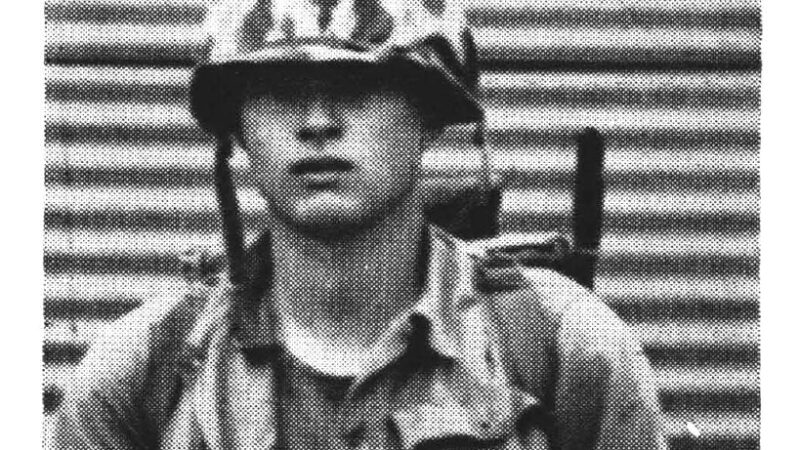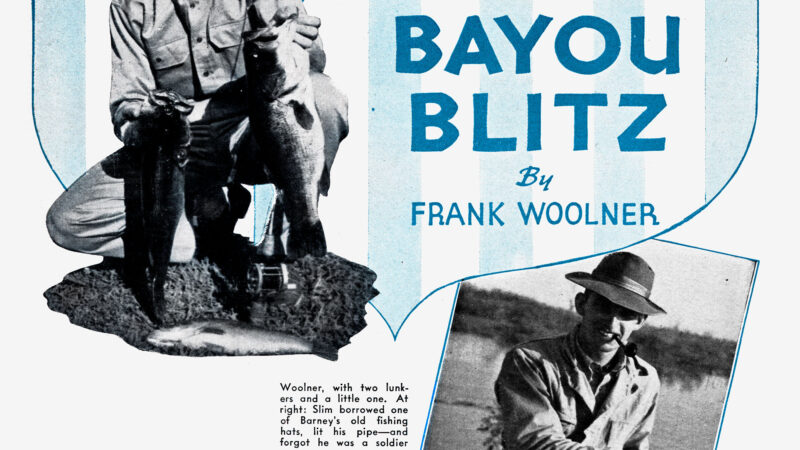Federal 7mm Backcountry, Tested and Reviewed
We may earn revenue from the products available on this page and participate in affiliate programs. Learn More ›
The Federal 7mm Backcountry is a new cartridge unlike anything we’ve seen to date. It uses a stainless-steel alloy case that can handle high chamber pressures to deliver magnum-level velocities from short-barreled rifles. On top of that, the 7mm Backcountry case is significantly smaller than a typical magnum. The silhouette of the 7 BC more closely resembles a .280 Remington than a 7mm Rem. Mag. or a 7mm PRC, yet it outperforms both those popular magnums with heavy-for-caliber bullets.
What does that look like in practice? Picture a light, handy mountain rifle that drives a 170-grain 7mm projectile at 3034 fps from a 20-inch barrel, while being able to hold five rounds in an internal BDL style magazine.
There’s a lot to unpack with this new cartridge, but if you’re interested in learning more you’ve come to the right place. Over the last few months, I’ve put 280 rounds downrange to gather accuracy and velocity data with all five initial factory loads. I’ve shot the 7mm Backcountry through three different rifles and hunted with it extensively last fall; no one has had a more comprehensive look at the round.
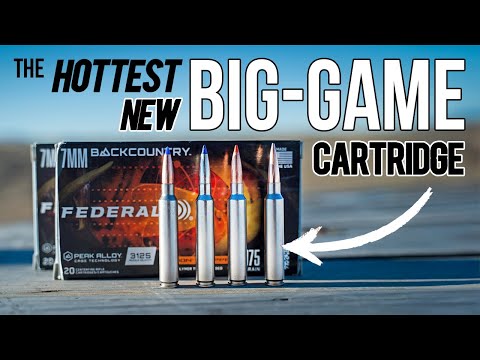
Article Topics
Here are the topics covered in this review. Click on one to jump straight to it, or read on.
- 7 BC’s “Peak Alloy” Case Design
- 7 BC’s Performance Goals
- Cartridge Specs
- Factory Ammo Offerings, Performance, and Accuracy
- A Note on Outdoor Life’s Accuracy Data
- Shooting and Hunting with the 7mm Backcountry
- Rifles Available in the 7 BC
- Why the 7mm Backcountry Country Was Developed
- 7mm Backcountry vs. 7mm PRC
- Barrel Length and Velocity
- Reloading the 7 BC
- Running the 7 BC with Suppressors
- Can All Factory Rifles Handle the 7mm Backcountry?
- Final Thoughts on the 7mm Backcountry
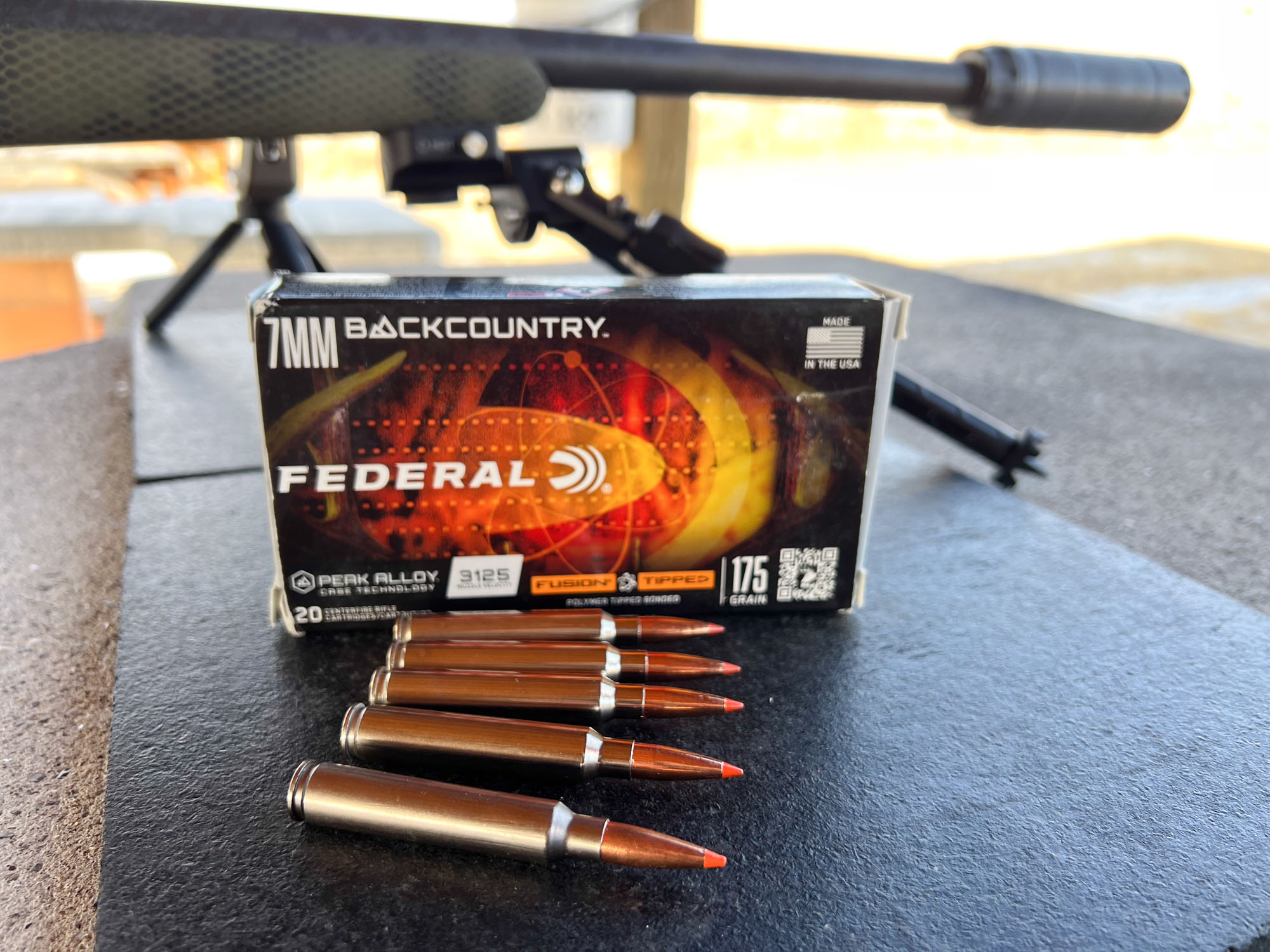
7mm Backcountry “Peak Alloy” Case Design
The 7mm Backcountry has a case made from what Federal is calling “Peak Alloy,” a type of stainless steel.
- The stainless-steel alloy can handle 80,000 psi chamber pressures. Typical modern cartridges like the 7 PRC have a maximum chamber pressure around 65,000 psi.
- The round can be run in regular rifles because the Peak Alloy case acts as a vessel that contains the excess pressure, preventing the action or receiver from experiencing more pressure than normal.
- As with a brass cartridge, the case expands to seal gasses from going back into the action. This expansion also allows the case to grip the inside of the chamber and mitigate the speed at which the case head slams into the bolt face. One reason the 7mm Backcountry is long and skinny, rather than short and fat, is to create ample contact with the chamber, reducing the rearward speed of the case when fired. This helps protect the rifle action from being damaged by the cartridge’s 80,000 psi chamber pressure.
- This case differs fundamentally from the Sig 277 Fury, which uses two materials in its construction: a brass body and steel case head. The 7 BC case is a uniform stainless-steel alloy.
Not Just a Steel-Cased Round
Some skeptical early commentary on the cartridge claims that the 7 BC is just a steel-cased round and represents a step backward in ammunition technology. This is incorrect. (That criticism was published by someone who’s never pulled the trigger on a 7 BC.) A standard steel cased round — typically associated with cheap military surplus ammunition — cannot safely handle the pressures of the 7mm Backcountry. Soda cans and aircraft frames are both made of aluminum, but they aren’t the same.
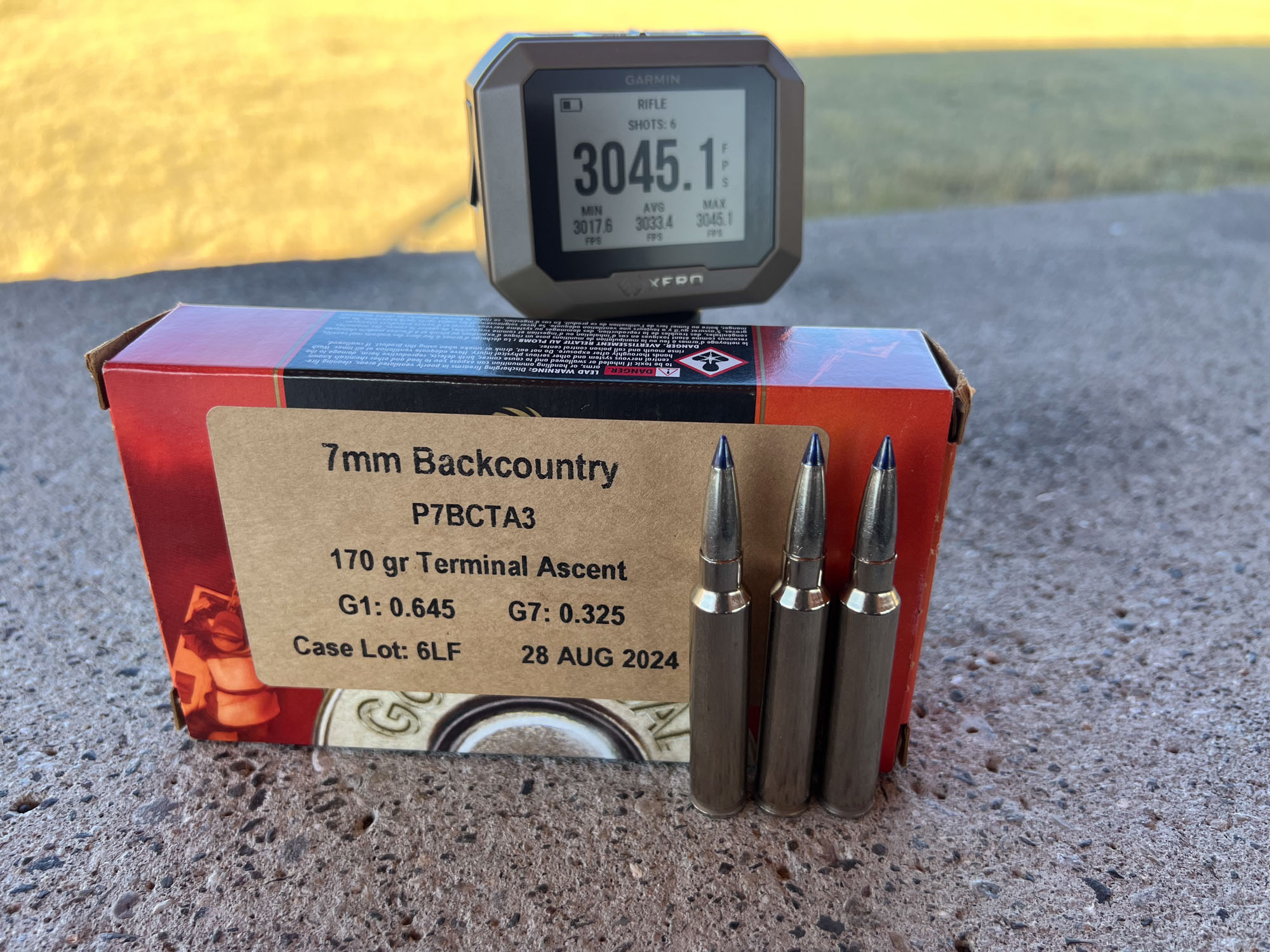
7 BC’s Performance Goals
With the 7mm Backcountry, Federal set out to create the fastest 7mm round with heavy bullets that will outperform other big 7mms like the 28 Nosler, 7mm PRC, 7mm Rem. Mag., 7mm Weatherby Mag. and the like. Those older cartridges will still be able to drive lighter bullets faster, such as the 155-grainers. But with the heavy-for-caliber bullets, 170 grains and up, the 7mm Backcountry is the new speed king.
Related: 7mm Magnum Showdown: 7mm Rem. Mag. vs. .28 Nosler vs. 7mm RUM
With the ability to contain and channel all that extra pressure, the 7 BC can spit those bullets out significantly faster — even though the case is smaller and has less volume than the other 7mm magnums.
Beyond the velocities the round generates, the 7mm Backcountry was designed to allow hunters to use light, shorter-barreled rifles and suppressors without sacrificing ballistic performance.
This will appeal to long-range shooters and technically inclined big-game hunters, plus anyone who is fond of high-performance mountain rifles.
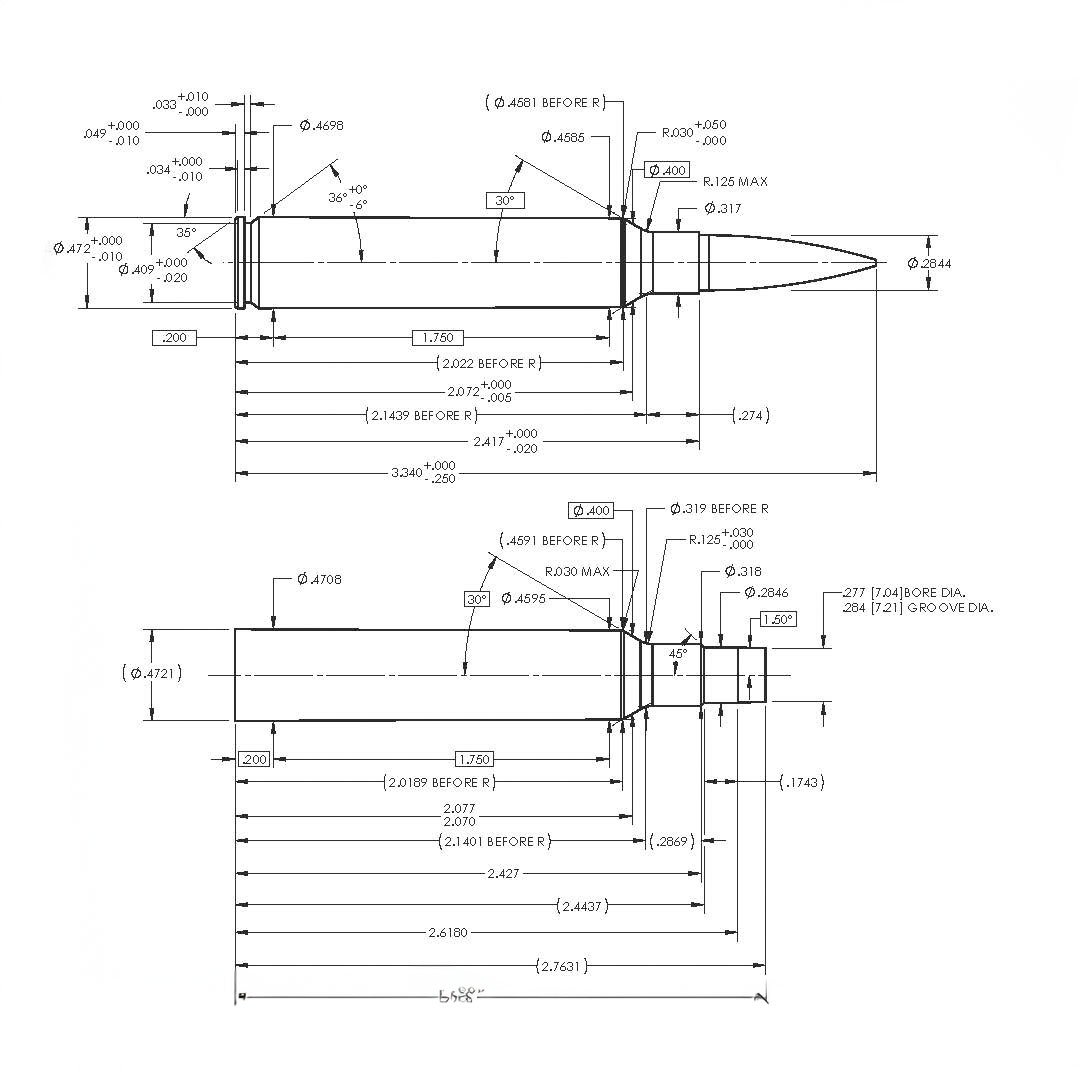
7mm Backcountry Cartridge Specs
- Overall Loaded Length: 3.34 inches
- Bolt Face: .472 inches
- Case Length: 2.417 inches
- Shoulder Angle: 30 degrees
- Bullet Diameter: .284 inches (7mm)
- Throat Diameter: .2846 inches (.0006 inches over bullet diameter)
- Recommended Twist: 1:8
- Max Chamber Pressure: 80,000 psi
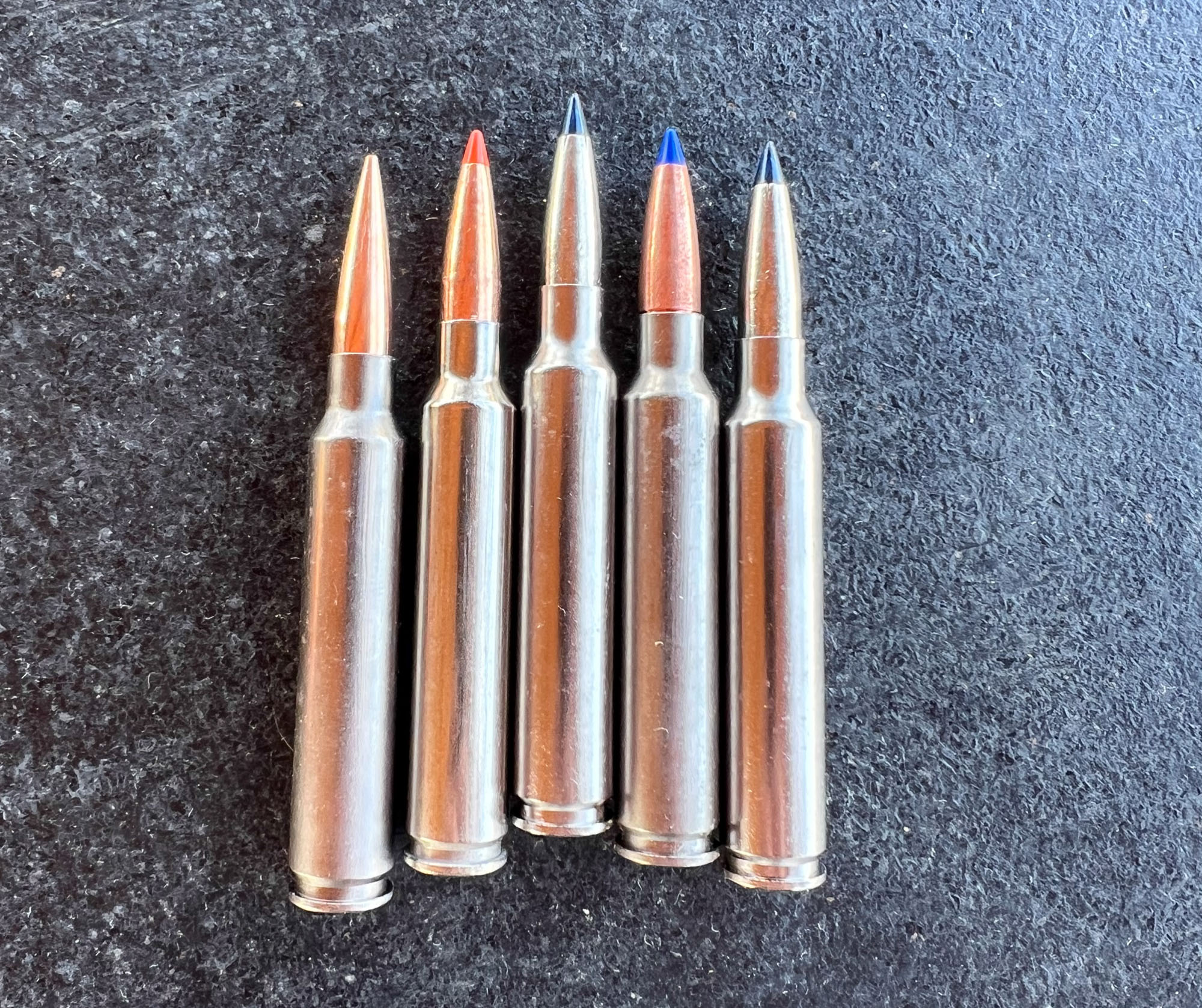
7mm Backcountry Factory Ammo
Federal is launching the 7mm Backcountry with five factory loads. From lightest to heaviest they include:
- Federal 155-grain Terminal Ascent
- Barnes 168-grain LRX
- Federal 170-grain Terminal Ascent
- Federal 175-grain Fusion Tipped
- Berger 190-grain Elite Hunter
These bullets cover a range of hunting applications. The Terminal Ascent is a bonded bullet with a reputation for excellent terminal ballistics. The Barnes LRX is a good option for those who want (or need) to use a non-lead projectile. The Fusion Tipped delivers excellent accuracy and is what I used while hunting elk this fall. And the Berger 190-grain Elite Hunter caters to those that want a hunting bullet that most closely resembles a high-BC match projectile.
In terms of cost, expect to see prices for the 7 BC in line with 7mm PRC ammo. Depending on the load that can range from $45 to $70 per box of 20 cartridges.
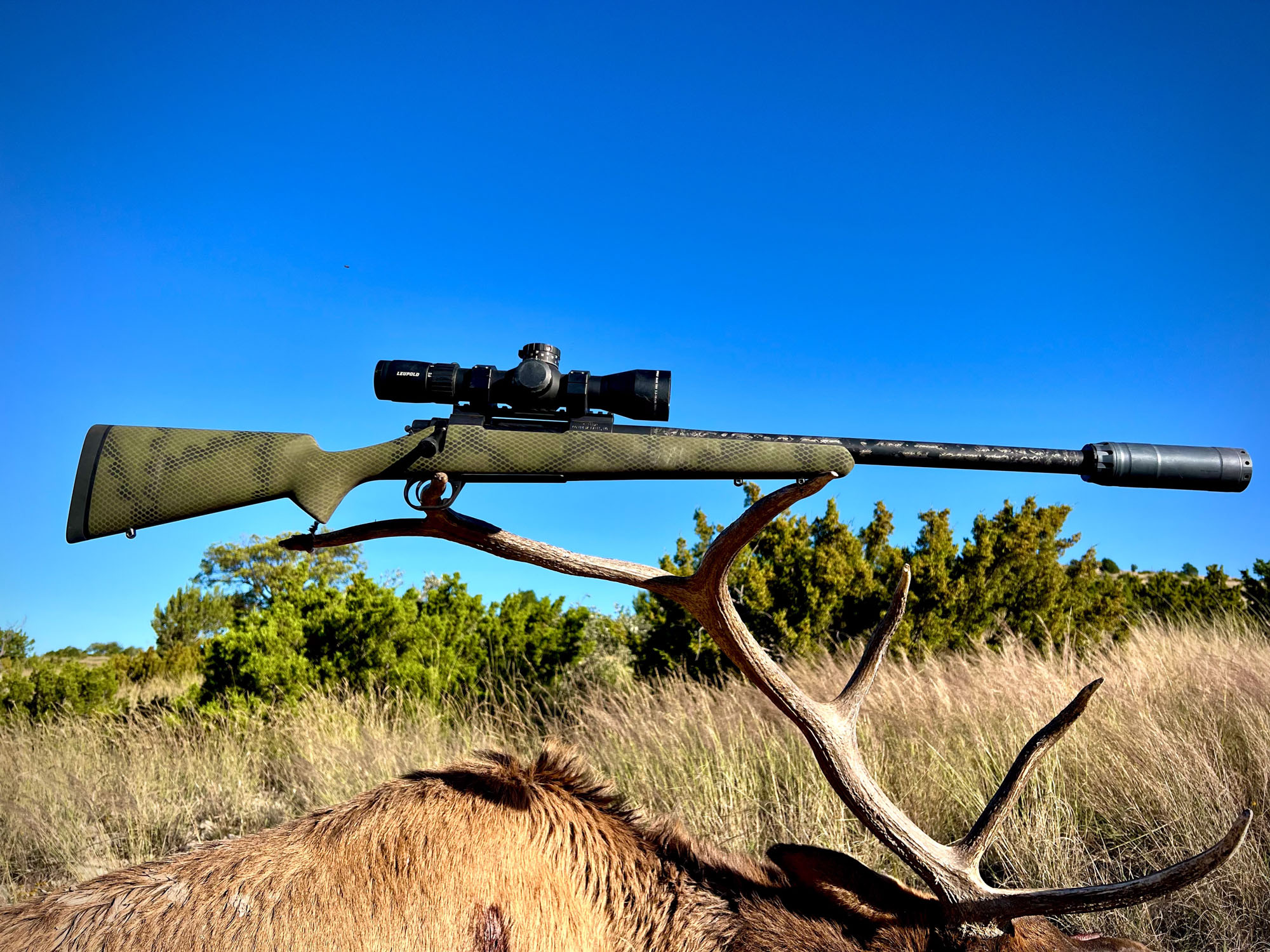
I’ve shot all these loads through my Proof Research Glacier Ti chambered in 7 BC and you can see how each stacks up in the chart below. The rifle has a 22-inch barrel, and I shot it with a KGM R30K suppressor attached. This is exactly the kind of rifle — short barreled, lightweight, and suppressed — that Federal had in mind when designing the 7 BC.
All the velocities and standard deviation (SD) data are based on 20 shots. I measured the muzzle velocities (MV) with Garmin’s excellent Xero C1 Pro chronograph.
I used Outdoor Life’s E.A.T.S. target to combine the individual five-shot groups into a 20-shot aggregate and calculate the extreme spread (ES) and mean radius of the 20-shot sample.
| Load | MV (fps) | SD (fps) | 5-Shot Group Avg. | 20-Shot Group ES | Mean Radius |
| Federal 155-gr. Terminal Ascent | 3162 | 7.4 | 1.358 in. | 1.76 in. | 0.53 in. |
| Barnes 168-gr. LRX | 3023 | 15.4 | 1.123 in. | 1.79 in. | 0.48 in. |
| Federal 170-gr. Terminal Ascent | 3036 | 14.3 | 1.207 in. | 1.94 in. | 0.57 in. |
| Federal 175-gr. Fusion Tipped | 2989 | 23.7 | 0.867 in. | 1.20 in. | 0.32 in. |
| Berger 195-gr. Elite Hunter | 2864 | 17.4 | 1.008 in. | 1.47 in. | 0.47 in. |
A Note on Outdoor Life’s Accuracy Data
There’s going to be a bunch of data published on the 7mm Backcountry, including accuracy data from other sources. And I’m willing to bet that most (if not all) those outlets will have “better” accuracy numbers.
Some will publish data with three-shot groups. Others will cherry-pick their best five-shot groups. None will have 20-shot group aggregate data, and I doubt any will publish Mean Radius values.
From the standpoint of assessing rifle or ammunition performance, three-shot groups don’t cut it. They don’t provide enough data and are, frankly, misleading. For instance, the first three shots of one of the groups I printed with the 155-grain Terminal Ascent through my Seekins PH2 measured a minuscule .089 inches — less than .1 MOA! If I used a three-shot protocol and rolled that into the accuracy average you’d think I’d have a record-setting rifle on my hands. But after putting two more shots downrange, the spread of that group ended up at 1.184 inches. Even five-shot groups are too small, but we publish that data because it is a metric that people are accustomed to.
A significant percentage of the three-shot groups I printed with the 7 BC were in the ½ MOA-range, give or take a tenth of an inch. But that doesn’t make the rifles, or this round, a ½ MOA performer in our book. And to be clear, if you go by 20-shot group data like we do, sub-MOA accuracy is uncommon, and ½ MOA-performance is basically unheard of.
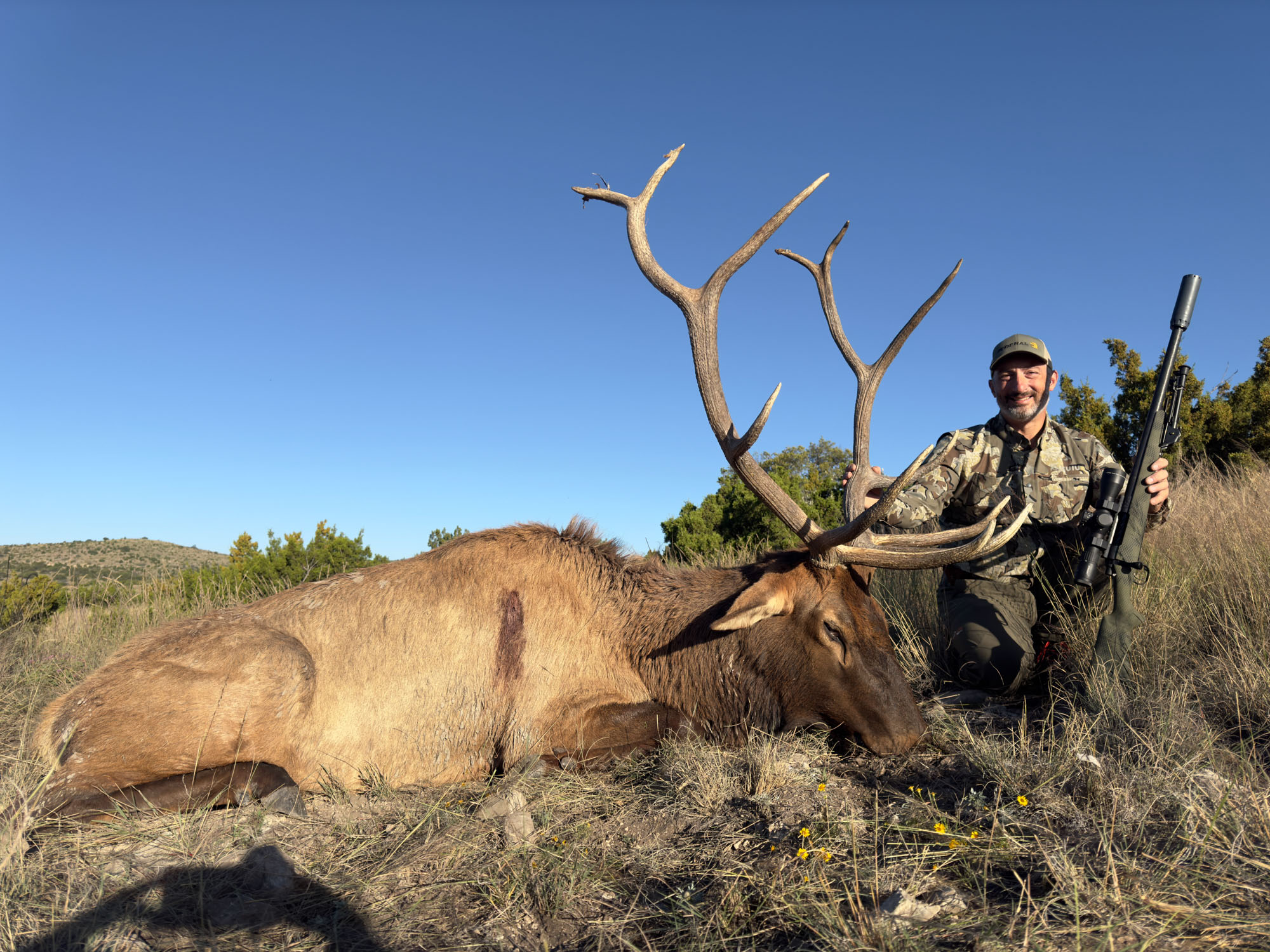
Shooting and Hunting with the 7mm Backcountry
Like many hunters I’ve long been a fan of .284-caliber cartridges, particularly the 7mm Magnums. I’ve had a lot of success with the 7mm Rem. Mag., 7mm Weatherby Mag., and .280 Remington over the years.
And as soon as the 7mm PRC was introduced, I jumped on the bandwagon. The PRC cartridge family has a lot going for it, and the 7 PRC filled a nice gap and is a worthy update to the classic 7mm Remington Magnum.
Then there are the ultra mags, short mags, the STW, the Shermans, and other niche .284-caliber rounds.
The point is, the 7mm field is a crowded one and any newcomer is going to have to muscle its way in to get a piece of the action.
Testing the 7mm Backcountry
Of the three rifles I’ve tested in 7 BC so far, I’ve had the most trigger time with the Proof Research Glacier Ti. I’ve put about 150 rounds through it to date.
I initially tested two loads with my Proof: the 170-grain Terminal Ascent and the 175-grain Fusion Tipped. The five-shot groups with the 170s averaged 1.2 inches. That’s not bad by any means, but the 175-grain Fusion Tipped just hammered. Five-shot groups with that load averaged .867 inches at just under 3,000 fps.
Given how well the Fusion Tipped shot, I opted to use it while hunting last fall. Though the Fusion Tipped is geared more toward the whitetail market, I didn’t hesitate to use it on elk, and it performed great. On a free-range hunt down in Texas, I had a high-shoulder impact on a rutting bull at 545 yards and my one shot dropped him.
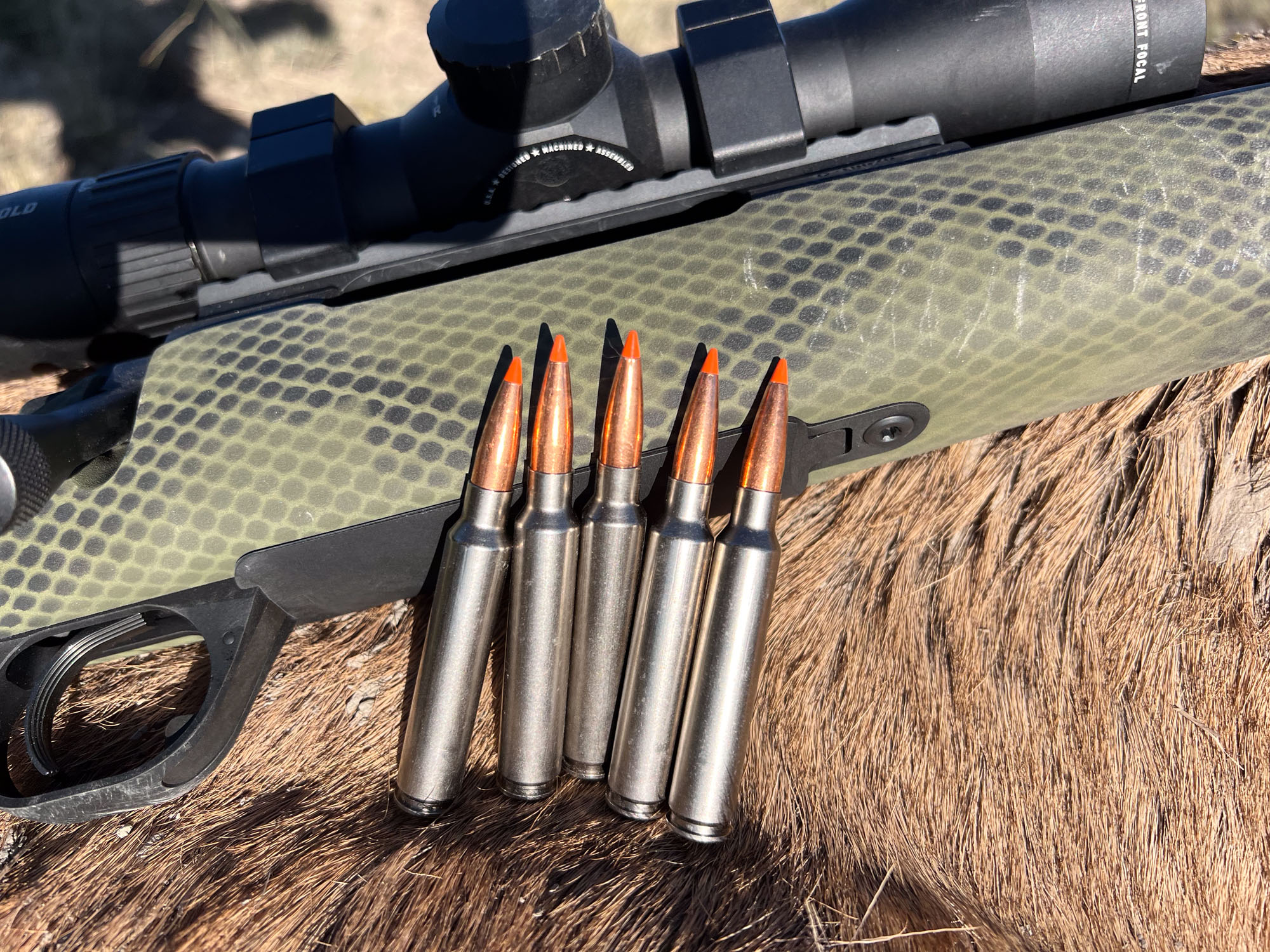
My confidence in the bullet’s performance at longer ranges was solidified after taking a long poke at a feral hog the day before I got my bull. While looking for elk, we crested a ridge and spotted a huge boar below us on a feeder. The distance from where we stood to the hog was 1,416 yards. I dialed the solution into my scope and fired. The elevation of the shot was perfect, but my windage was slightly off. About two seconds after the bullet exited the muzzle, it cruised right in front of the boar’s nose. In spite of the small windage error, the shot gave me great confidence in the system’s capabilities at more reasonable distances, which is why the shot on the elk the following day didn’t seem like a stretch.
There’s no question the 7 BC shoots flat and hits hard, making use of the extra pressure the case is designed to handle.
Having shot the round through three lightweight rifles now, I’ve gotten a good feel for the 7mm Backcountry. The recoil is stiff but manageable. It makes a lot of sense to run the round with a suppressor if you have one. Not only does it add some weight to the rifle, but the reduction in muzzle blast makes for a much more pleasant shooting experience.
The Horizon Venatic I shot has a 16-inch barrel and comes with an effective muzzle brake. I opted to shoot it that way to compare it to the Proof and Seekins, both of which sported suppressors. While the muzzle brake did a good job taking the bite out of the recoil, the blast and pressure generated by the brake were not fun to cope with. I’d suggest pulling the brake from any 7 BC rifle you might try and running it suppressed, as Federal’s engineers intended.
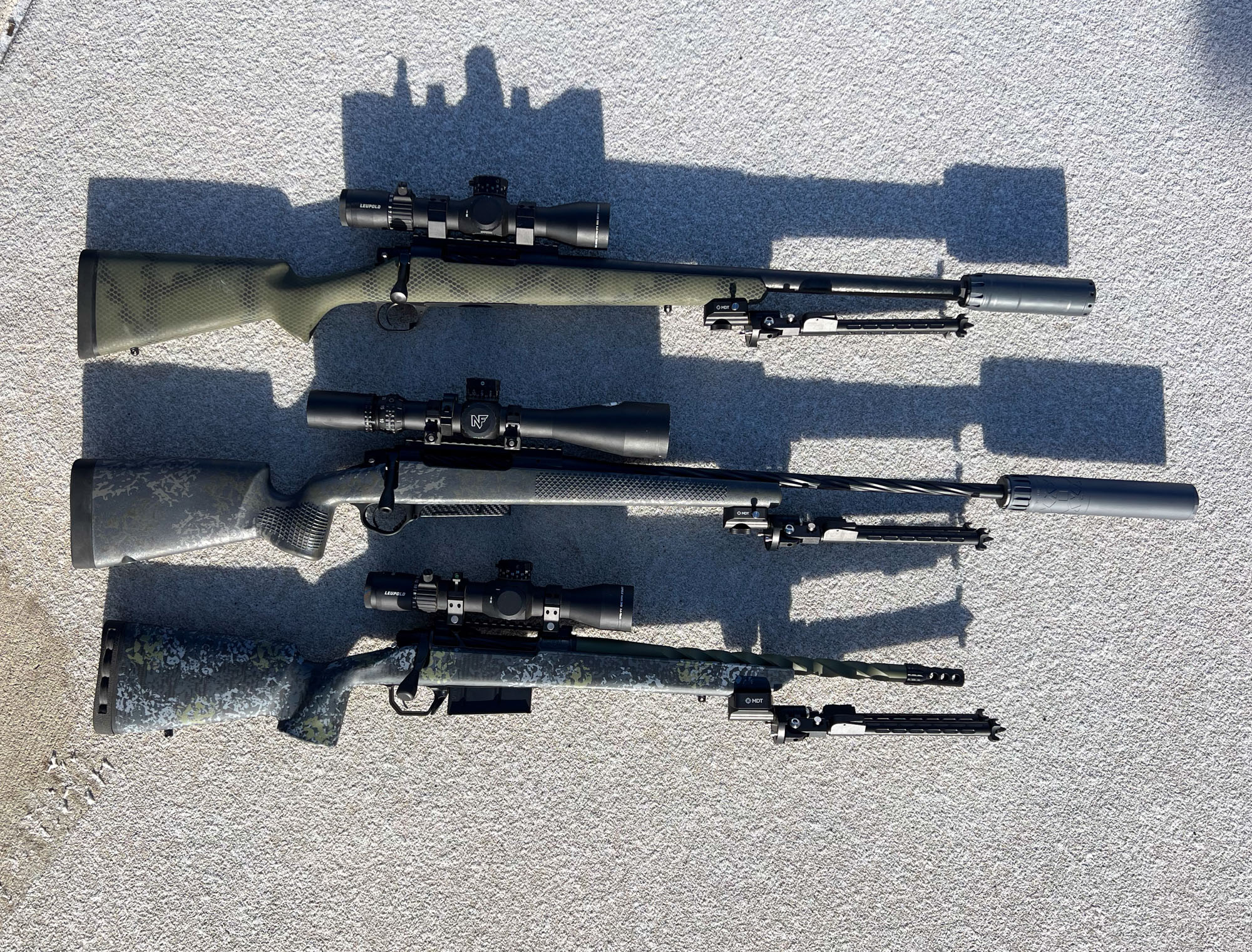
Rifles Available in the 7mm Backcountry
A new cartridge cannot succeed without support from gun makers. Federal approached numerous manufacturers who have raised their hands to produce rifles.
I have 7 BC rifles from four different companies currently: Proof Research, Seekins Precision, Horizon Firearms, and Geissele. I’ve shot all but the Geissele, which I will get to once I have more ammo. As of this writing there are a total of eleven rifle makers on board to start production this year, with others in the wings. These include:
- AllTerra Arms Mountain Shadow Carbon, Mountain Shadow Steel, AllTerra-X
- Christensen Arms Ridgeline FFT with 16-, 20-, and 24-inch barrels
- Fierce Arms Rogue, Twisted Rogue, Twisted Ti Rogue, CT Rogue, Rival, Rival XP, Mtn Reaper, Rage, CT Rage, Rage LR, Reaper H-Tac
- Geissele King Hunter
- Gunwerks Magnus MTX
- Horizon Firearms Vandal Carbon 2 22-inch, Venatic 16- and 22-inch, Venatic Carbon 16-inch
- Proof Research Glacier, Glacier Ti, and Ascension
- Pure Precision Ascent and Carbon Ascent
- Savage 110 Trail Hunter Lite, 110 Timberline, 110 Ultralite, 110 Ultralite Elite, and 110 Pro Pursuit Rifle
- Seekins Precision Havak Pro Hunter 3, Havak Element M3, and Havak Element Hunter Chassis
- Weatherby 307 and Mark V
Given this level of support from gun makers, the 7mm Backcountry is off to a good start.
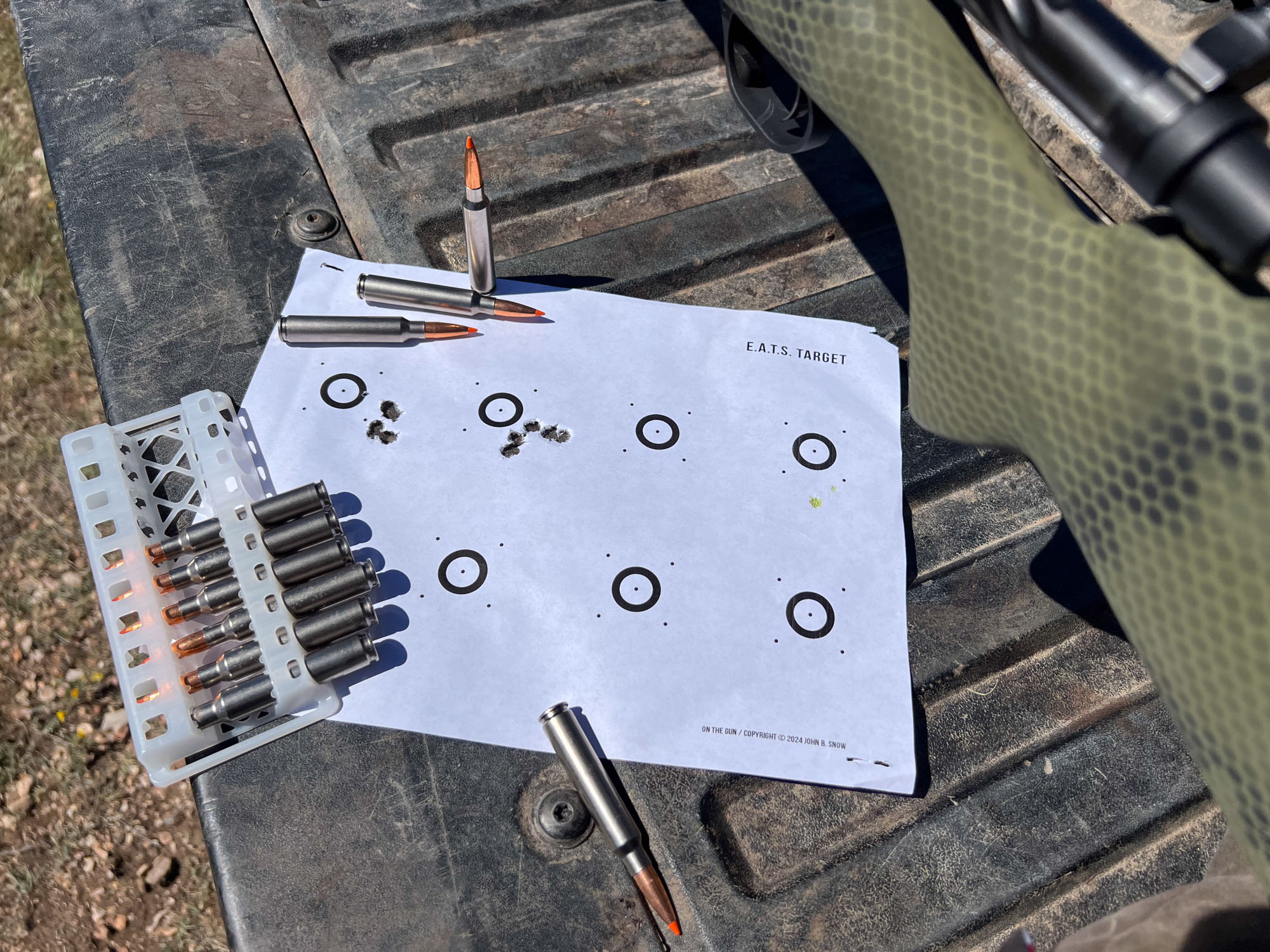
Why the 7mm BC Was Developed
This round didn’t just fall out of the sky. The 7 BC’s development, which has taken several years, is based on requirements set forth by the Department of Defense. When looking at the battlefield of the future, the DoD realized that many of our potential adversaries are going to be equipped with body armor. And they want our soldiers, Marines, sailors, and airmen to have rifles that can defeat that armor.
The DoD’s answer to this is to drive heavy bullets at faster speeds, and to do that means jacking up the pressure. This is the philosophy behind the Sig 277 Fury but, as you might know, that round has been beset with problems in pursuit of that goal.
The 7 BC aims to be a better mousetrap, one that is reliable and accurate. Time will tell if the 7mm Backcountry accomplishes this, but my initial experience suggests that the round is poised for success.
For those who might think the 7 BC is just a fad, guess again. Because the military is set on equipping troops with high-pressure (and high-velocity) rounds, this concept is here to stay. Whether the 7mm Backcountry is the ultimate solution is up for debate. We’ll have to see what other ammo makers might introduce. There’s no doubt we’ll see other calibers using this case and this technology, so don’t be surprised if a .277, .30, or 6.5 appears in the coming years.
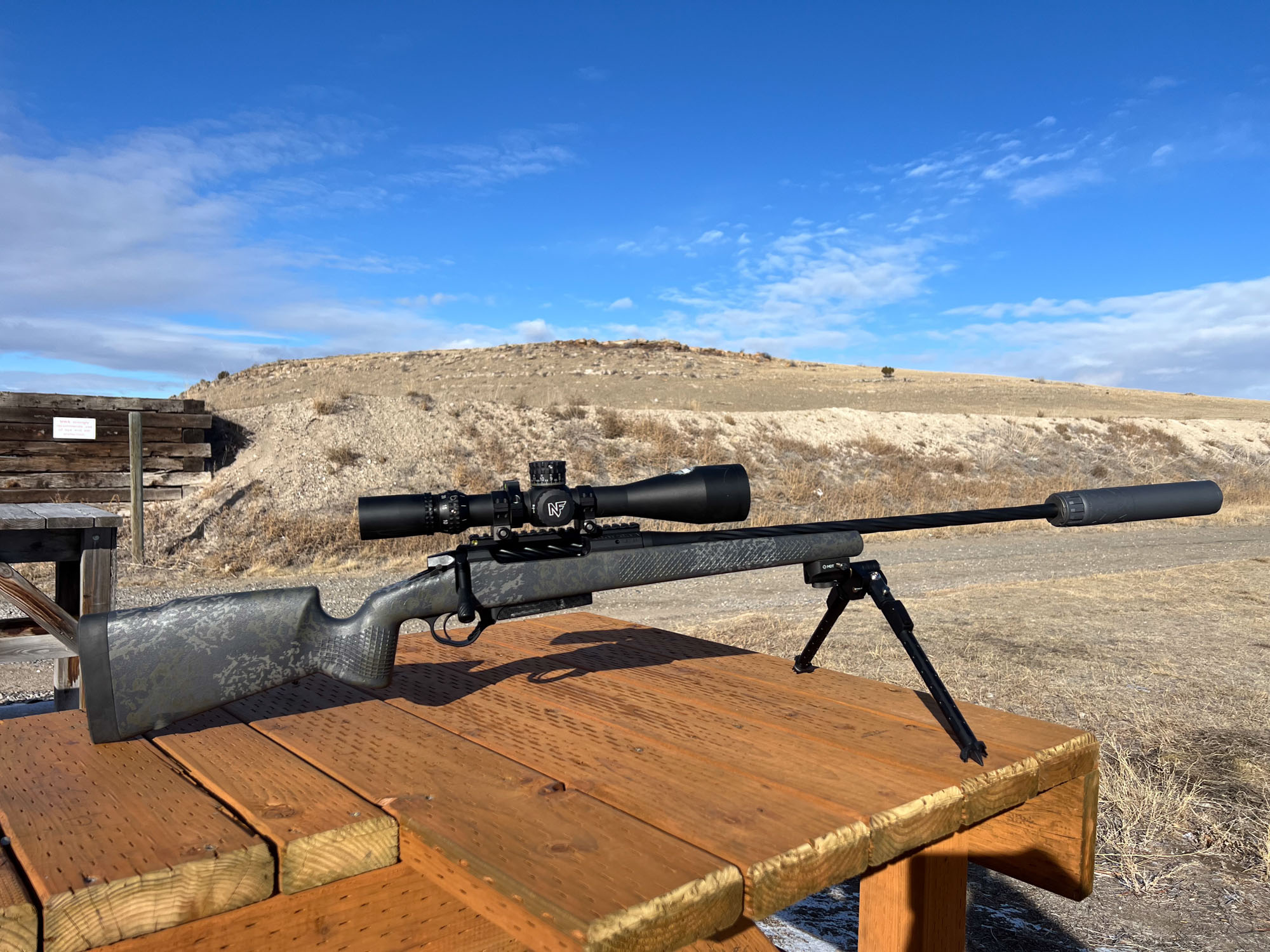
7mm Backcountry vs. 7mm PRC
The best way I had to test Federal’s claims regarding the 7 BC was to conduct an apples-to-apples test with its closest competitor, Hornady’s 7mm PRC. Like the 7mm PRC, the 7mm Backcountry is built along the principles of Modern Cartridge Design. Both rounds are designed to be inherently accurate and are optimized for heavy-for-caliber, high-BC bullets.
| 7mm Backcountry | 7mm PRC | |
| Overall Length | 3.340 in. | 3.340 in. |
| Bolt Face | .472 in. | .532 in. |
| Shoulder Angle | 30 degrees | 30 degrees |
| Throat Diameter | .2846 in. | .2846 in. |
| Case Length | 2.417 in. | 2.280 in. |
| Case Width at Web | .4698 in. | .5320 in. |
| Recommended Twist | 1:8 | 1:8 |
| Max Chamber Pressure | 80,000 psi | 65,000 psi |
Both cartridges have steep shoulder angles, minimal case taper, fast 1:8 twist rates, and tight chamber dimensions. But there are key differences, too. The 7 BC case is longer and skinnier, and, because of its stainless-steel alloy construction, able to deal with chamber pressures of 80,000 psi, versus the 65,000 psi max of the 7 PRC.
I shot both rounds through essentially identical rifles — the Proof Glacier Ti — using Federal ammo loaded with the same projectile, the 170-grain Terminal Ascent. Other than their chambering, the only difference between the rifles was barrel length. The Proof in 7mm Backcountry has a 20-inch barrel, while the Proof in 7mm PRC has a 24-inch barrel.
I shot both rifles suppressed and, despite the 7 PRC’s length advantage, the 7mm Backcountry outpaced it.
| Rifle | Cartridge | Bullet | Barrel Length | MV (fps) | SD (fps) | 5-Shot Group Avg. | 20-Shot Group ES | Mean Radius |
| Proof Glacier Ti | 7 BC | Fed. 170-gr TA | 20 in. | 3036 | 14.3 | 1.207 | 1.94 in. | .57 in. |
| Proof Glacier Ti | 7 PRC | Fed. 170-gr TA | 24 in. | 3020 | 14.8 | 1.331 | 2.30 in. | .49 in. |
That the 7 BC generates better muzzle velocities than the 7mm PRC with four fewer inches of barrel is remarkable. It makes for a much lighter, handier, and packable rifle that is better suited to running with a suppressor. Not only that, the Proof in 7 BC is able to accommodate five rounds in its internal magazine, while the one chambered in 7mm PRC can only take three.
This demonstrates how Federal is delivering on the promise of the new round. Should you want to run the round in a rifle with a longer barrel, the performance gap between the 7mm Backcountry and the 7mm PRC would widen.
As you can see, the two rounds were similar in other respects. Their SDs were nearly identical. (Based on 20 rounds fired, SDs in the mid teens are excellent for factory ammo.) And the accuracy results — 5-shot group average, 20-shot extreme spread, mean radius — were also comparable.
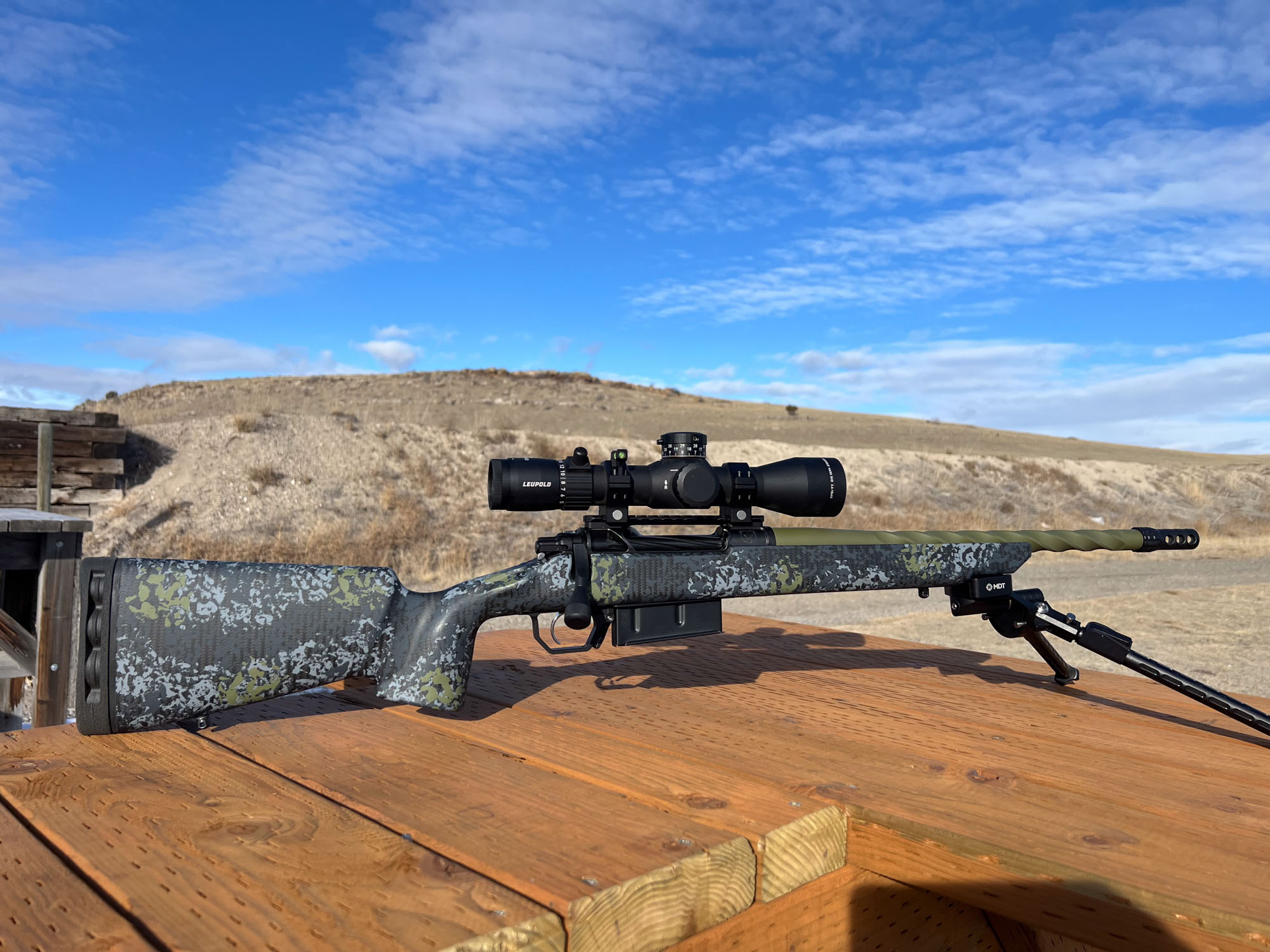
Barrel Length and Velocity
As you might know, there is a direct correlation between barrel length and muzzle velocity. As a barrel is cut shorter it loses muzzle velocity, because less of the propellant has been able to burn, robbing the bullet of speed.
There’s no hard-and-fast rule for the relationship between barrel length and muzzle velocity. It depends on the case capacity and type of propellant used.
But with the 7mm Backcountry I’ve been able to test three barrel lengths while recording data for 20 shots with two different factory loads. Here’s what I found.
| Rifle | Barrel Length | Load | MV (fps) | SD (fps) | 5-shot Group Avg. | 20-shot ES | Mean Radius |
| Seekins PH2 | 22 in. | Federal 155-gr. Terminal Ascent | 3190 | 10.8 | 0.968 in. | 1.54 in. | 0.46 in. |
| Proof Glacier Ti | 20 in. | Federal 155-gr. Terminal Ascent | 3162 | 7.4 | 1.358 in. | 1.76 in. | 0.53 in. |
| Horizon Venatic | 16 in. | Federal 155-gr. Terminal Ascent | 3039 | 14.4 | 1.778 in. | 2.77 in. | 0.75 in. |
| Seekins PH2 | 22 in. | Federal 175-gr. Fusion Tipped | 3027 | 14.5 | 1.031 in. | 1.55 in. | 0.49 in. |
| Proof Glacier Ti | 20 in. | Federal 175-gr. Fusion Tipped | 2988 | 25.5 | 0.867 in. | 1.20 in. | 0.32 in. |
| Horizon Venatic | 16 in. | Federal 175-gr. Fusion Tipped | 2854 | 22.1 | 1.56 in. | 2.38 in. | 0.69 in. |
As expected, the shorter the barrel, the lower the muzzle velocity. Between the Seekins PH2 (22-inch barrel) and Proof Glacier Ti (20-inch barrel), the loss amounted to 14 fps/inch for the 155-grain load, and 19.5 fps/inch for the 175-grain bullet. The four-inch drop in barrel length from the Proof to the Horizon was more dramatic. The loss in speed per inch with the 155-grain load was 30.8 fps, and was 33.5 fps per inch with the 175-grain Fusion Tipped.
Doing the same calculation between the longest barrel (22 inches) and shortest barrel (16 inches) we find a loss per inch of 25.2 fps with the 155-grain load, and 28.8 fps with the 175-grain load.
Based on this data, if you’re considering a rifle with a 24-inch (or longer) barrel in the 7 BC I think you could safely assume a gain of 40 to 50 fps for every two inches in barrel length.
The chart also shows the good SDs of Federal’s ammo, and the accuracy of the 175-grain Fusion Tipped bullet. We also see how the Seekins PH2 liked the 155-grain Terminal Ascent, reinforcing the idea that it pays to try multiple types of ammo in any new rifle.
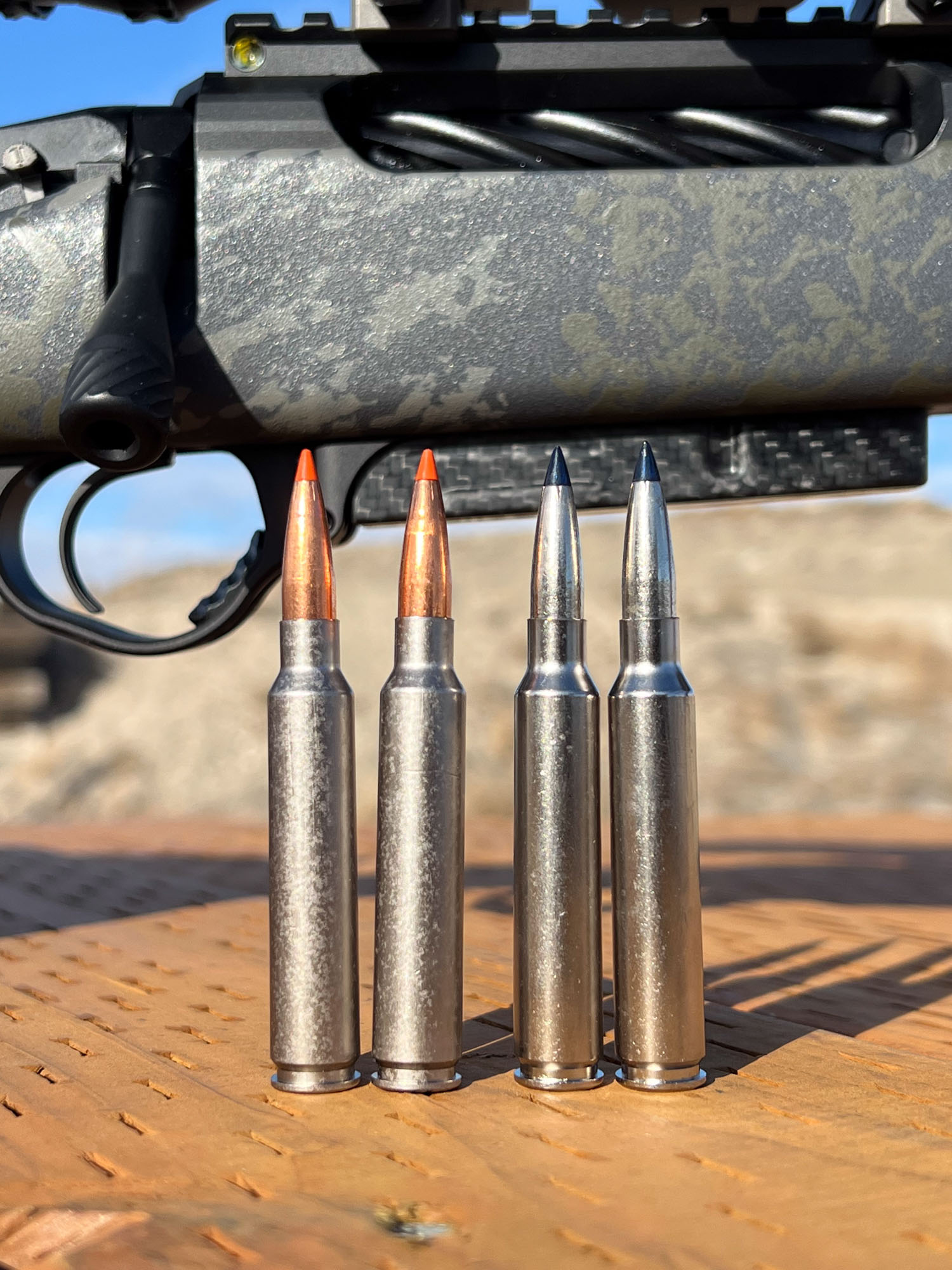
Reloading the 7mm Backcountry
Whether the 7mm Backcountry can be reloaded is an open question. And as of this writing, it doesn’t look promising for reloaders.
The first issue is the construction of the case. Because the 7 BC case uses a stainless-steel alloy rather than traditional brass, it isn’t as reloader-friendly. According to Federal, the stainless-steel alloy cannot be annealed, which means that the cases will probably get brittle after a handful of firings. At that point I’m assuming they’ll exhibit cracked necks or shoulders and need to be pitched. I say, “I assume,” because I haven’t been able to test this myself. This is based on what Federal’s engineers have said.
I know that RCBS is working on reloading dies for the 7 BC, and I’m eager to try them. But from what I’ve heard from RCBS, the dies are having trouble resizing the cases. In order to get them back to their original factory size they need to be run through the die multiple times — more than a dozen cycles, in fact.
If that remains the case, then the appeal of the 7 BC for reloaders will be significantly diminished.
Read Next: Rifle Nodes — How You’ve Been Wasting Your Time and Money on Load Development
But another, and potentially larger, issue is powder. The powders Federal is loading in the cartridge currently are not available to the general public. This is quite common in the world of ammunition manufacturing, but if we’re not able to get our hands on a commercially-available equivalent that can safely generate the pressures needed to achieve the level of performance the factory 7mm Backcountry provides, then reloading the cartridge becomes much less attractive.
I know Hodgdon is trying to identify publicly-available powders that can work but for now they haven’t found any viable candidates.
I’m eager to reload this cartridge and will keep this section updated. But barring the ability to effectively anneal the cartridges, resize them easily, and charge them with propellants that deliver the expected level of performance, the appeal of the 7 BC for reloaders will be negligible.
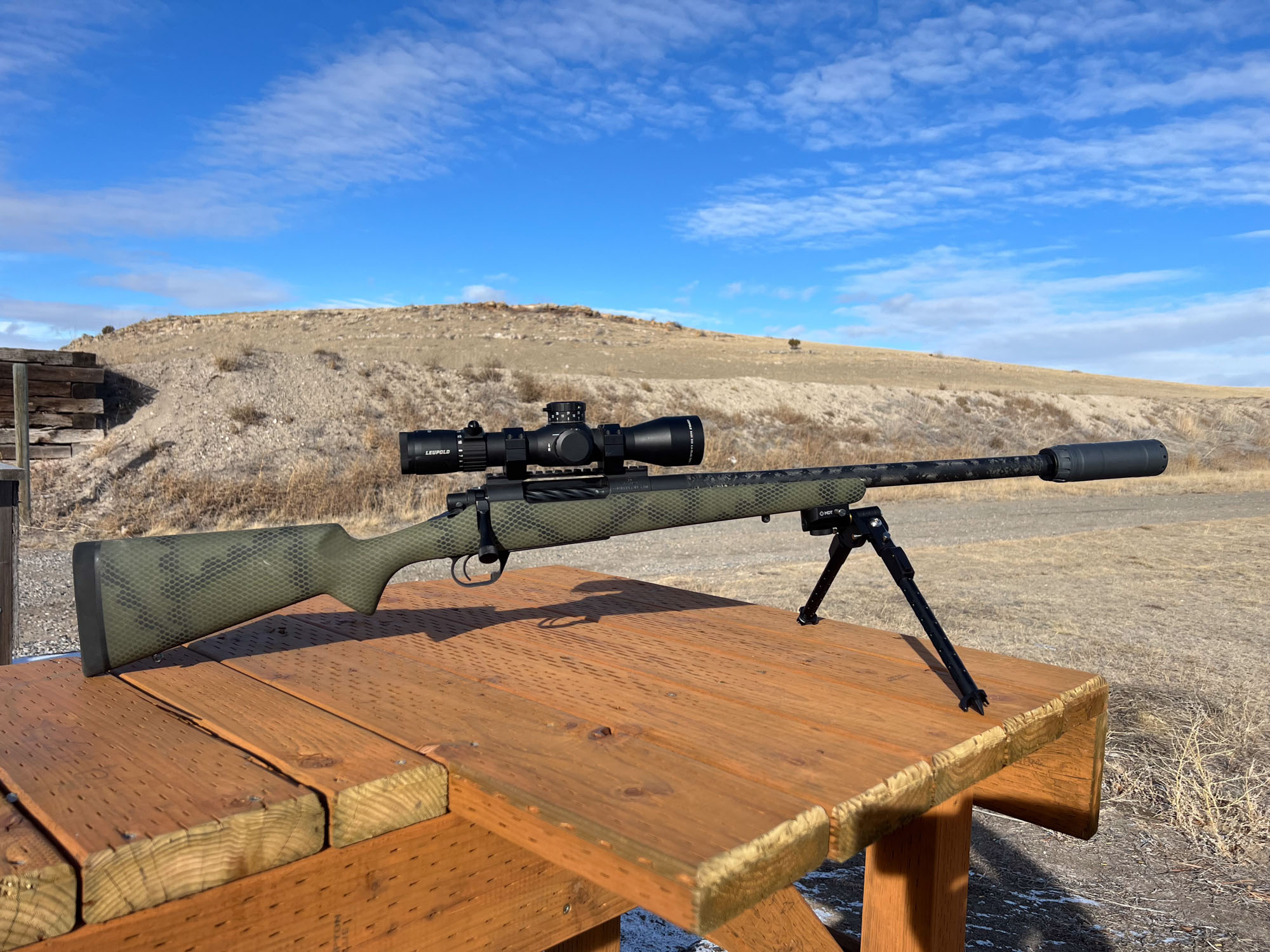
Running the 7mm Backcountry with Suppressors
It’s one thing for the chamber of a 7mm Backcountry rifle to handle 80,000 psi of pressure, but what happens at the muzzle? Are regular suppressors, especially the lightweight hunting suppressors that adopters of the 7 BC are likely to use, able to withstand the muzzle blast generated by this potent round?
This was a concern of mine, but it isn’t something to lose sleep over, according to Federal. I spoke with their engineers, and they told me that despite the high pressures the round develops in the chamber, the pressure at the muzzle is no greater than a regular 7mm magnum round, like the 7mm PRC.
I don’t know how they pulled that off, but I’m going to take them at their word. I’ve been running the 7 BC with a few different suppressors, mostly the outstanding KGM R30K, but also the Able Company Theorem-L, Silencer Central Banish Backcountry, and Elite Iron STFU. I haven’t had any issues with any of them.
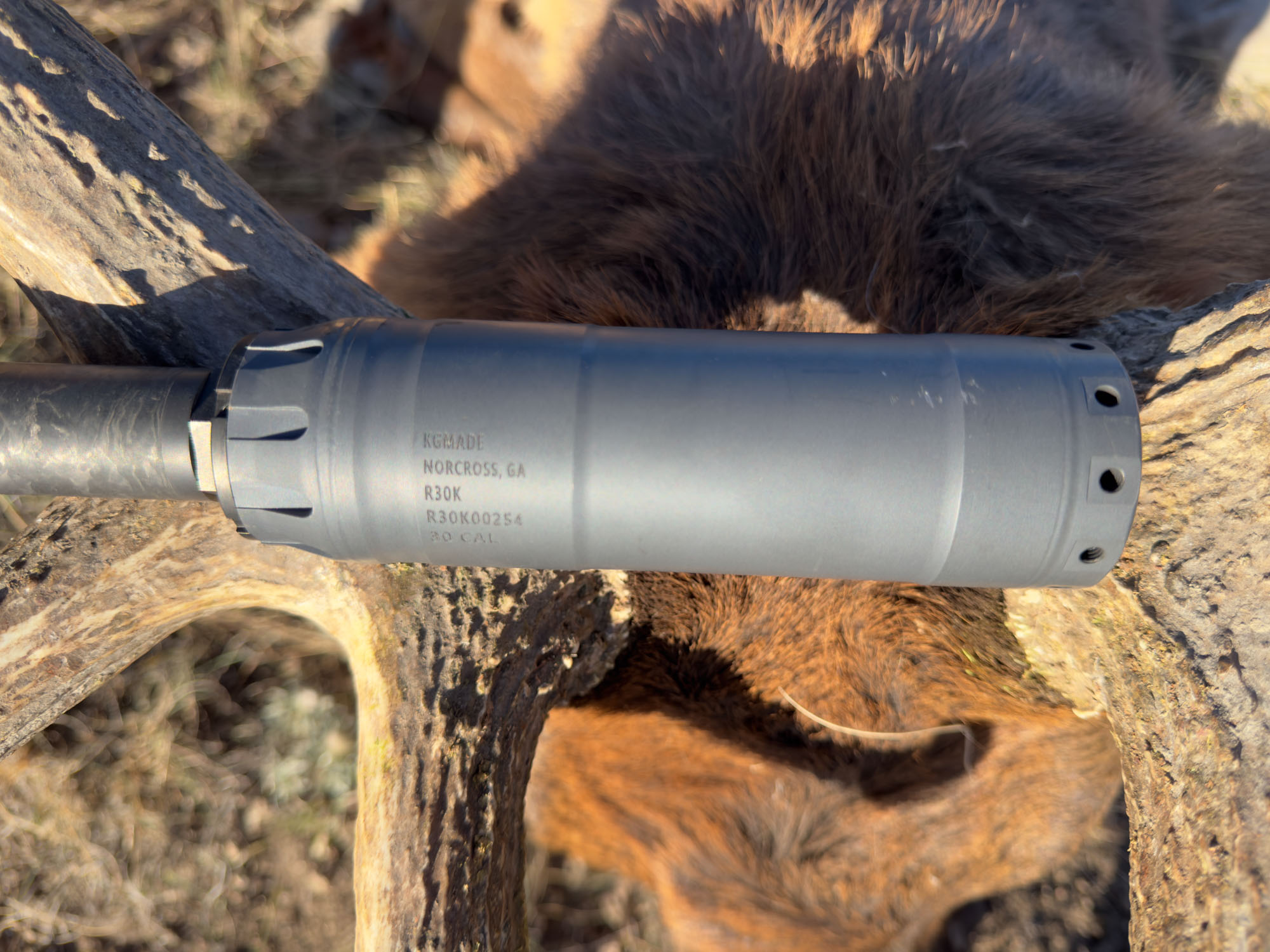
Can All Factory Rifles Handle the 7mm Backcountry?
This is a hell of a question. And a good portion of the long-term success of the 7 BC hinges on the answer.
The engineers at Federal know their stuff, and say that any modern bolt-action should be able to handle the new round because of the way the Peak Alloy case contains the excess pressure.
I’m not about to second-guess them, but there’s a big difference between the science and design theory behind a new concept, and the way it plays out in the real world.
The fact of the matter is that not all rifle actions are made equal. Some use harder material than others. Some are machined to tighter tolerances than others. Some extractor and ejector designs are robust while others are less so.
The point is that I wouldn’t be surprised if not every rifle out there is able to reliably run the potent 7mm Backcountry round.
Even with the rifles I’ve tested so far I’ve noticed something that supports this concern: increased bolt lift during primary extraction. I put five-shot strings through the rifles while gathering accuracy data, and it wasn’t uncommon for the bolt lift during primary extraction to get heavier after the fourth or fifth shot, sometimes requiring a knock with my hand on the underside of the bolt knob to overcome the resistance.
(For those that might not know, primary extraction occurs at the top of the bolt lift, before the bolt is pulled rearward, which is secondary extraction. The term “primary extraction” is a bit confusing because it doesn’t happen until the bolt handle is already near the top of the lift. At this point, the bolt encounters a ramp that levers the bolt back a few millimeters, pulling the case free of the chamber. That’s primary extraction.)
I don’t want to blow this out of proportion. There’s often a shakedown period with new technology — remember the feeding issues that many short-mags had when they first came out in the early 2000s? In general these hiccups are straightforward to resolve. But I would be remiss if I didn’t mention it here.
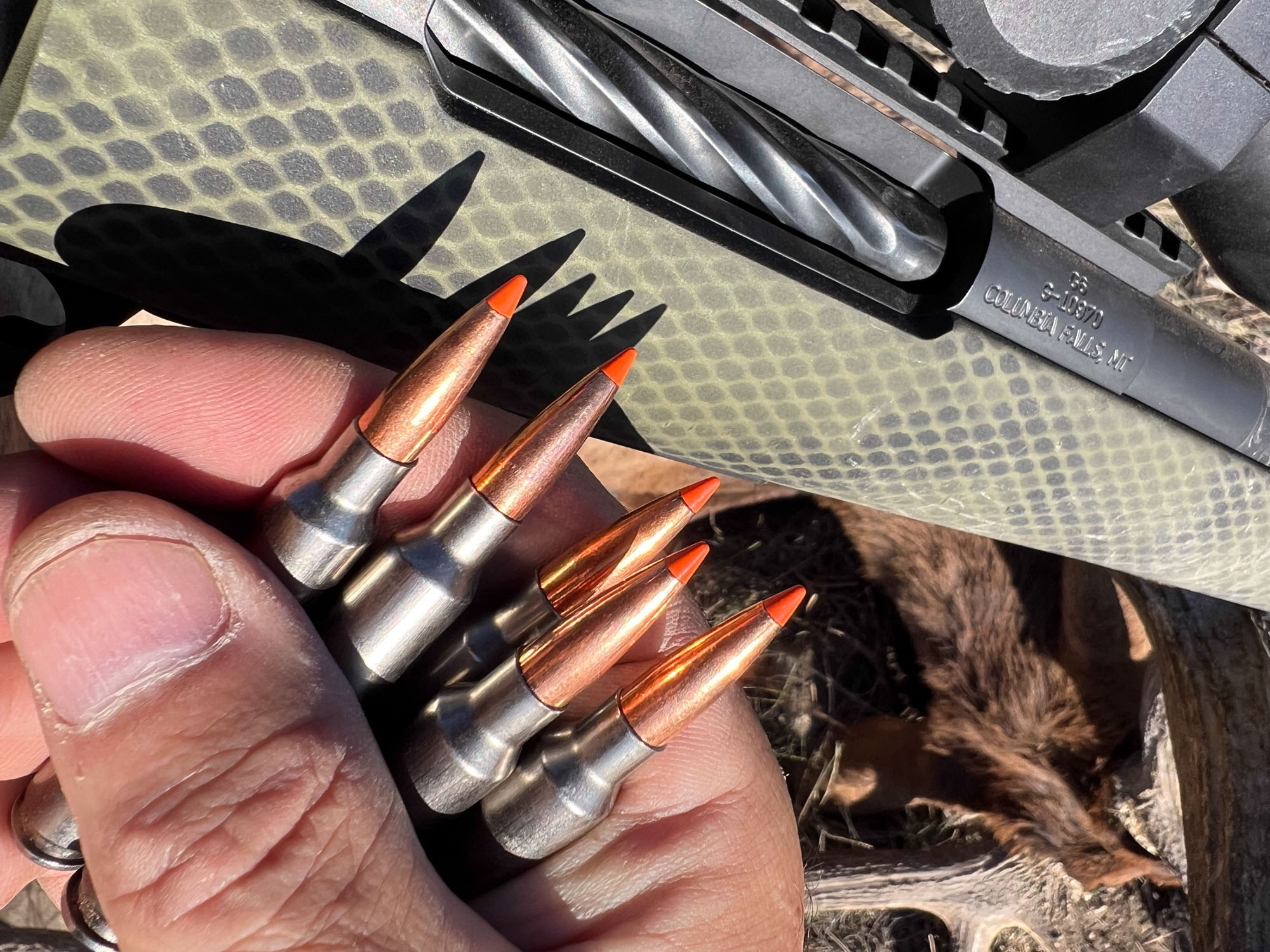
Final Thoughts on the 7mm Backcountry
I’m pretty excited about this cartridge, despite some of the obstacles it will face. On the plus side it does a legitimate job delivering on its main promise, which is magnum performance with heavy bullets out of nimble, lightweight short-barreled rifles.
That the 7 BC allows for a 5+1 capacity in an internal BDL-style magazine is a really appealing bonus. For the hunting I most like to do — spot and stalk in the backcountry where long shots can be expected — it is about perfect.
The 7 BC will handle everything from deer and elk to moose and bears without any issues. Some of my friends took early prototypes to Africa and it performed very well on the plains game there.
But there are some legitimate concerns about the cartridge, too. If it is unable to be reloaded, that’s a pretty big drawback. It isn’t a fatal flaw, but it will curtail the round’s appeal with technical hunters and shooters who would otherwise be fully on board.
There’s also the issue of ammo availability. I mentioned that successful new cartridges need support from rifle manufacturers, and the 7 BC has that. But for long term success the round should ideally be loaded by other ammo makers as well.
Will Federal be willing to license its proprietary case technology to the likes of Hornady, Winchester, Nosler, and others? Or will the 7 BC only remain available from a single source, like the Sig 277 Fury is today? This would significantly limit its reach.
Finally, will all rifle actions be able to handle the thunder the 7 BC brings to the party, or will lesser designs with looser tolerances, inferior components, and weaker materials struggle to cope?
Personally, I’m very encouraged by what I’ve seen so far. Big game hunters, especially those who are fond of the sweet spot that 7mm magnums hit — being neither too much to handle in light rifles while being more than sufficient for elk and other large animals — will want to give the 7mm Backcountry a serious look. The round is shootable, accurate, and is optimized for mountain rifles and mountain hunting.
While too early to say one way or the other, my gut tells me the 7mm Backcountry has a bright future ahead.
The post Federal 7mm Backcountry, Tested and Reviewed appeared first on Outdoor Life.
Source: https://www.outdoorlife.com/guns/federal-7mm-backcountry-review/



